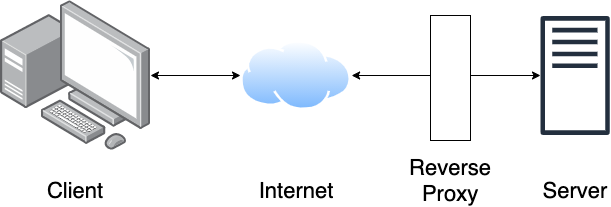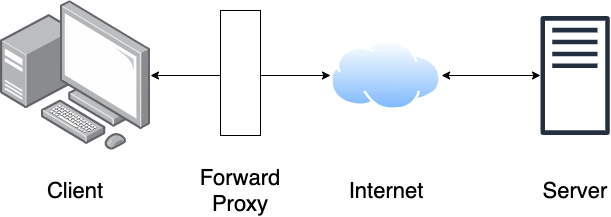Understanding Proxies
Proxies are used throughout the internet. This post will describe why they are used, along with the two main flavors of proxies.
The basic paradigm of the internet is the Client-Server/Request-Response.

The client, for example a web browser, makes a HTTP request to a web server. The web server responds. Simple enough.
Proxies
Proxies are intermediaries that sit either in front of the server or client. If the proxy sits in front of the server, it is often time referred to as a reverse proxy. Any proxy that sits between the client and the internet, is referred to as a forward proxy.
Reverse Proxies

Common use cases for reverse proxies include load balancing, caching, editing response headers.
For example, with Apache HTTP Server, a reverse proxy to an application running on port 3000 with response header modification can be configured by enabling the mod_proxy and mod_headers modules, along updating the Apache config with:
<VirtualHost *:*>
ProxyPreserveHost On
# Reverse proxy application running locally on the server at port 3000
ProxyPass / https://0.0.0.0:3000/
ProxyPassReverse / https://0.0.0.0:3000/
ServerName localhost
# set cache-control response header
Header merge Cache-Control no-cache
</VirtualHost>
Forward Proxies

An example of a forward proxy is a VPN service, where all internet traffic from a client flows securely through a secure tunnel. The benefit of a VPN is the traffic is encrypted (making it good to use when connecting through insecure wifi like at a coffees shop), and the IP address of the client is hidden– the IP address will be that of the VPN provider.
See a typo? Submit a Pull Request.